Patent Data Analytics for Technology Forecasting of the Railway Main Transformer
Abstract
1. Introduction
2. Literature Review
3. Methodology
3.1. Research Framework
3.2. Preprocessing and Patent-IPC Matrix Extraction
3.3. Technology Level Evaluation of IPC
3.3.1. Technology Mapping Analysis
3.3.2. Time Series Analysis
3.3.3. Social Network Analysis
3.4. Identification of Vacant Technology through Generative Topographic Mapping (GTM)
4. Analysis Results
4.1. Patent Data Collect and Technology Trend Analysis
4.1.1. Patent Data Collect
4.1.2. Technology Trend Analysis
4.2. Technology Level Evaluation of IPC
4.3. Forecasting of Vacant Technology
4.3.1. Identification of Vacant Technology Based on Promising Detailed IPC Technology Areas: Generative Topographic Mapping (GTM) Analysis
4.3.2. Forecasting of Vacant Technology in Each Group
5. Discussion
6. Conclusions
Author Contributions
Funding
Institutional Review Board Statement
Informed Consent Statement
Data Availability Statement
Acknowledgments
Conflicts of Interest
References
- Paul, S.G.; Ravichandran, C. High frequency transformer in electric traction with bidirectional DC-DC converter using customized embedded system. Microprocess. Microsyst. 2020, 77, 103162. [Google Scholar] [CrossRef]
- Song, W.; Jiang, Z.; Staines, M.; Badcock, R.A.; Wimbush, S.C.; Fang, J.; Zhang, J. Design of a single-phase 6.5 MVA/25 kV superconducting traction transformer for the Chinese Fuxing high-speed train. Int. J. Electr. Power Energy Syst. 2020, 119, 105956. [Google Scholar] [CrossRef]
- Serrano-Jiménez, D.; Abrahamsson, L.; Castaño-Solís, S.; Sanz-Feito, J. Electrical railway power supply systems: Current situation and future trends. Int. J. Electr. Power Energy Syst. 2017, 92, 181–192. [Google Scholar] [CrossRef]
- Türker Ahi, M.; Yildiz, K. Determining performance criteria of railway market: A case study. J. Open Innov. Technol. Mark. Complex. 2018, 4, 6. [Google Scholar]
- Yun, S.; Cho, W.; Kim, C.; Lee, S. Technological trend mining: Identifying new technology opportunities using patent semantic analysis. Inf. Process. Manag. 2022, 59, 102993. [Google Scholar] [CrossRef]
- Wang, C.; Geng, H.; Sun, R.; Song, H. Technological potential analysis and vacant technology forecasting in the graphene field based on the patent data mining. Resour. Policy 2022, 77, 102636. [Google Scholar] [CrossRef]
- Tseng, F.-M.; Hsieh, C.-H.; Peng, Y.-N.; Chu, Y.-W. Using patent data to analyze trends and the technological strategies of the amorphous silicon thin-film solar cell industry. Technol. Forecast. Soc. Change 2011, 78, 332–345. [Google Scholar] [CrossRef]
- Linares, I.M.P.; De Paulo, A.F.; Porto, G.S. Patent-based network analysis to understand technological innovation pathways and trends. Technol. Soc. 2019, 59, 101134. [Google Scholar] [CrossRef]
- Sun, X.; Jin, L.; Zhou, F.; Jin, K.; Wang, L.; Zhang, X.; Ren, H.; Huang, H. Patent analysis of chemical treatment technology for wastewater: Status and future trends. Chemosphere 2022, 307, 135802. [Google Scholar] [CrossRef]
- Joung, J.; Kim, K. Monitoring emerging technologies for technology planning using technical keyword based analysis from patent data. Technol. Forecast. Soc. Change 2017, 114, 281–292. [Google Scholar] [CrossRef]
- Wang, X.; Daim, T.; Huang, L.; Li, Z.; Shaikh, R.; Kassi, D.F. Monitoring the development trend and competition status of high technologies using patent analysis and bibliographic coupling: The case of electronic design automation technology. Technol. Soc. 2022, 71, 102076. [Google Scholar] [CrossRef]
- Maehara, Y.; Kuku, A.; Osabe, Y. Macro analysis of decarbonization-related patent technologies by patent domain-specific BERT. World Pat. Inf. 2022, 69, 102112. [Google Scholar] [CrossRef]
- Janse, M.E.; Zinkweg, D.B.; Larsen, O.F.; van de Burgwal, L. Innovations in the veterinary intestinal health field: A patent landscape analysis. One Health 2022, 15, 100419. [Google Scholar] [CrossRef] [PubMed]
- Jin, L.; Sun, X.; Ren, H.; Huang, H. Hotspots and trends of biological water treatment based on bibliometric review and patents analysis. J. Environ. Sci. 2023, 125, 774–785. [Google Scholar] [CrossRef]
- Jafery, W.A.Z.W.C.; Omar, M.S.S.; Ahmad, N.A.; Ithnin, H. Classification of patents according to industry 4.0 pillars using machine learning algorithms. In Proceedings of the 2019 6th International Conference on Research and Innovation in Information Systems (ICRIIS), Johor Bahru, Malaysia, 2–3 December 2019; pp. 1–6. [Google Scholar]
- Zhu, H.; Du, Z.; Wu, J.; Sun, Z. Innovation environment and opportunities of offshore wind turbine foundations: Insights from a new patent analysis approach. World Pat. Inf. 2022, 68, 102092. [Google Scholar] [CrossRef]
- Ampah, J.D.; Jin, C.; Fattah, I.M.R.; Appiah-Otoo, I.; Afrane, S.; Geng, Z.; Yusuf, A.A.; Li, T.; Mahlia, T.I.; Liu, H. Investigating the evolutionary trends and key enablers of hydrogen production technologies: A patent-life cycle and econometric analysis. Int. J. Hydrogen Energy 2022. [Google Scholar] [CrossRef]
- Kim, D.; Kim, S. Role and challenge of technology toward a smart sustainable city: Topic modeling, classification, and time series analysis using information and communication technology patent data. Sustainable Cities Soc. 2022, 82, 103888. [Google Scholar] [CrossRef]
- Wei, F.; Zhou, H.; Gao, G.; Zheng, Q. Analysis of trends in patent development for coronavirus detection, prevention, and treatment technologies in key countries. J. Biosaf. Biosecurity 2022, 4, 23. [Google Scholar] [CrossRef]
- Baumann, M.; Domnik, T.; Haase, M.; Wulf, C.; Emmerich, P.; Rösch, C.; Zapp, P.; Naegler, T.; Weil, M. Comparative patent analysis for the identification of global research trends for the case of battery storage, hydrogen and bioenergy. Technol. Forecast. Soc. Change 2021, 165, 120505. [Google Scholar] [CrossRef]
- Liu, K.-T.; Chen, C.-H. Formulation of research and development strategy by analysing patent portfolios of key players the semiconductor industry according to patent strength and technical function. World Pat. Inf. 2022, 70, 102125. [Google Scholar] [CrossRef]
- Mao, G.; Han, Y.; Liu, X.; Crittenden, J.; Huang, N.; Ahmad, U.M. Technology status and trends of industrial wastewater treatment: A patent analysis. Chemosphere 2022, 288, 132483. [Google Scholar] [CrossRef] [PubMed]
- Park, S.; Jun, S. Technological cognitive diagnosis model for patent keyword analysis. ICT Express 2020, 6, 57–61. [Google Scholar] [CrossRef]
- Yang, H.; Han, Y.J.; Yu, J.; Kim, S.; Lee, S.; Kim, G.; Lee, C. Exploring Future Promising Technologies in Hydrogen Fuel Cell Transportation. Sustainability 2022, 14, 917. [Google Scholar] [CrossRef]
- Choi, J.; Hwang, Y.-S. Patent keyword network analysis for improving technology development efficiency. Technol. Forecast. Soc. Change 2014, 83, 170–182. [Google Scholar] [CrossRef]
- Madani, F.; Weber, C. The evolution of patent mining: Applying bibliometrics analysis and keyword network analysis. World Pat. Inf. 2016, 46, 32–48. [Google Scholar] [CrossRef]
- Yoon, B.; Magee, C.L. Exploring technology opportunities by visualizing patent information based on generative topographic mapping and link prediction. Technol. Forecast. Soc. Change 2018, 132, 105–117. [Google Scholar] [CrossRef]
- Feng, J.; Liu, Z.; Feng, L. Identifying opportunities for sustainable business models in manufacturing: Application of patent analysis and generative topographic mapping. Sustain. Prod. Consum. 2021, 27, 509–522. [Google Scholar] [CrossRef]
- Yuan, X.; Li, X. Mapping the technology diffusion of battery electric vehicle based on patent analysis: A perspective of global innovation systems. Energy 2021, 222, 119897. [Google Scholar] [CrossRef]
- Ferreira, R.B.; Parreira, M.R.; Nabout, J.C. Is there concordance between Science and Technology in Natural Science? Mapping the relationship among number of papers and patents from research on Cerrado plants. World Pat. Inf. 2022, 69, 102108. [Google Scholar] [CrossRef]
- Lee, C.; Kang, B.; Shin, J. Novelty-focused patent mapping for technology opportunity analysis. Technol. Forecast. Soc. Change 2015, 90, 355–365. [Google Scholar] [CrossRef]
- Suominen, A.; Toivanen, H.; Seppänen, M. Firms’ knowledge profiles: Mapping patent data with unsupervised learning. Technol. Forecast. Soc. Change 2017, 115, 131–142. [Google Scholar] [CrossRef]
- Noh, H.; Jo, Y.; Lee, S. Keyword selection and processing strategy for applying text mining to patent analysis. Expert Syst. Appl. 2015, 42, 4348–4360. [Google Scholar] [CrossRef]
- Choi, H.; Woo, J. Investigating emerging hydrogen technology topics and comparing national level technological focus: Patent analysis using a structural topic model. Appl. Energy 2022, 313, 118898. [Google Scholar] [CrossRef]
- Kang, I.-S.; Na, S.-H.; Kim, J.; Lee, J.-H. Cluster-based patent retrieval. Inf. Process. Manag. 2007, 43, 1173–1182. [Google Scholar] [CrossRef]
- Chen, Y.-L.; Chiu, Y.-T. An IPC-based vector space model for patent retrieval. Inf. Process. Manag. 2011, 47, 309–322. [Google Scholar] [CrossRef]
- Abbas, A.; Zhang, L.; Khan, S.U. A literature review on the state-of-the-art in patent analysis. World Pat. Inf. 2014, 37, 3–13. [Google Scholar] [CrossRef]
- Cho, H.P.; Lim, H.; Lee, D.; Cho, H.; Kang, K.-I. Patent analysis for forecasting promising technology in high-rise building construction. Technol. Forecast. Soc. Change 2018, 128, 144–153. [Google Scholar] [CrossRef]
- Kim, K.H.; Han, Y.J.; Lee, S.; Cho, S.W.; Lee, C. Text mining for patent analysis to forecast emerging technologies in wireless power transfer. Sustainability 2019, 11, 6240. [Google Scholar] [CrossRef]
- Kwon, K.; Jun, S.; Lee, Y.-J.; Choi, S.; Lee, C. Logistics Technology Forecasting Framework Using Patent Analysis for Technology Roadmap. Sustainability 2022, 14, 5430. [Google Scholar] [CrossRef]
- Sun, D.; Zeng, S.; Ma, H.; Shi, J.J. How do high-speed railways spur innovation? IEEE Trans. Eng. Manag. 2021, 22, 72. [Google Scholar] [CrossRef]
- Hanley, D.; Li, J.; Wu, M. High-speed railways and collaborative innovation. Reg. Sci. Urban Econ. 2022, 93, 103717. [Google Scholar] [CrossRef]
- Durmuşoğlu, A.; Durmuşoğlu, Z.D.U. Remembering Medical Ventilators and Masks in the Days of COVID-19: Patenting in the Last Decade in Respiratory Technologies. IEEE Trans. Eng. Manag. 2022. [Google Scholar] [CrossRef]
- Durmusoglu, A.; Durmusoglu, Z.D.U. Traffic control system technologies for road vehicles: A patent analysis. IEEE Intell. Transp. Syst. Mag. 2020, 13, 31–41. [Google Scholar] [CrossRef]
- Baser, K.H.C.; Buchbauer, G. Handbook of Essential Oils: SCIENCE, Technology, and Applications; CRC Press: Boca Raton, FL, USA, 2009. [Google Scholar]
- Anatolyevna, K.O. Analysis of technological trends to identify skills that will be in demand in the labor market with open-source data using machine learning methods. Известия Саратoвскoгo университета. Нoвая серия. Серия Математика. Механика. Инфoрматика 2022, 22, 123–129. [Google Scholar]
- Nikolopoulos, K.; Buxton, S.; Khammash, M.; Stern, P. Forecasting branded and generic pharmaceuticals. Int. J. Forecast. 2016, 32, 344–357. [Google Scholar] [CrossRef]
- Hingley, P.; Dikta, G. Use of Information Criteria for finding Box-Jenkins Time Series Models for Patent Filings Counts Forecasts. IAENG Int. J. Appl. Math. 2022, 52, 1–11. [Google Scholar]
- Hidalgo, A.; Gabaly, S. Use of prediction methods for patent and trademark applications in Spain. World Pat. Inf. 2012, 34, 19–29. [Google Scholar] [CrossRef]
- Durmuşoğlu, A. Effects of clean air act on patenting activities in chemical industry: Learning from past experiences. Sustainability 2017, 9, 862. [Google Scholar] [CrossRef]
- Liu, X.; Yang, X. Identifying technological innovation capability of high-speed rail industry based on patent analysis. In Proceedings of the 2019 8th International Conference on Industrial Technology and Management (ICITM), Cambridge, UK, 2–4 March 2019; pp. 127–131. [Google Scholar]
- Cho, Y.; Han, Y.J.; Hwang, J.; Yu, J.; Kim, S.; Lee, C.; Lee, S.; Yi, K.P. Identifying technology opportunities for electric motors of railway vehicles with patent analysis. Sustainability 2021, 13, 2424. [Google Scholar] [CrossRef]
- Du, W.; Niu, K.; Yang, Z.; Li, D.; Nai, W. Analysis of Representative Invention Patents on Train Signal Control Technique of Thales SEC Transport. In Proceedings of the 2022 IEEE 12th International Conference on Electronics Information and Emergency Communication (ICEIEC), Beijing, China, 15–17 July 2022; pp. 259–263. [Google Scholar]
- Karasev, O.; Zheleznov, M.; Trostyansky, S.; Shitova, Y.A. Comprehensive Analysis of Forms of Innovative Activity of Foreign Railway Companies. World Transp. Transp. 2020, 18, 158–170. [Google Scholar] [CrossRef]
- Feng, L.; Yu, X. A study on the integration innovation mode of China railway high-speed (CRH) technology. In Proceedings of the 2018 Portland International Conference on Management of Engineering and Technology (PICMET), Honolulu, HI, USA, 19–23 August 2018; pp. 1–5. [Google Scholar]
- Gou, J. Development status and global competition trends analysis of maglev transportation technology based on patent data. Urban Rail Transit 2018, 4, 117–129. [Google Scholar] [CrossRef]
- Zhang, Y.; Zhang, G. Data analysis of railway industry patents. In Proceedings of the 2nd International Conference on Big Data Research, Barcelona, Spain, 3–5 August 2018; pp. 27–32. [Google Scholar]
- Zhang, F.; Zhang, X. Patent activity analysis of vibration-reduction control technology in high-speed railway vehicle systems in China. Scientometrics 2014, 100, 723–740. [Google Scholar] [CrossRef]
- Xiao, J.Y. The development and innovative direction of train control system. In Proceedings of the 2011 2nd International Conference on Intelligent Control and Information Processing, Harbin, China, 25–28 July 2011; pp. 442–445. [Google Scholar]
- Salmi, P.; Torkkeli, M. Inventions Utilizing Satellite Navigation Systems in the Railway Industry: An Analysis of Patenting Activity. J. Technol. Manag. Innov. 2009, 4, 46–58. [Google Scholar] [CrossRef][Green Version]
- Lee, J.Y.; Yoon, Y.G.; Oh, T.K.; Park, S.; Ryu, S.I. A study on data pre-processing and accident prediction modelling for occupational accident analysis in the construction industry. Appl. Sci. 2020, 10, 7949. [Google Scholar] [CrossRef]
- Lee, H.-Y.; Kim, D.-H.; Park, K.-R. Pest diagnosis system based on deep learning using collective intelligence. Int. J. Electr. Eng. Educ. 2019. [Google Scholar] [CrossRef]
- Tarle, B.; Jena, S. Ant lion optimization based medical data classification using modified neuro fuzzy classifier. Wirel. Pers. Commun. 2021, 117, 1223–1242. [Google Scholar] [CrossRef]
- Kim, C.; Kwon, S.; Kim, J. The evaluation of korea’s competitiveness in lubricants industries using patent index analysis. Korean Chem. Eng. Res. 2016, 54, 332–339. [Google Scholar] [CrossRef]
- Horvath, D.; Baskin, I.; Marcou, G.; Varnek, A. Generative topographic mapping of conformational space. Mol. Inform. 2017, 36, 1700036. [Google Scholar] [CrossRef]
- Jeong, Y.; Lee, K.; Yoon, B.; Phaal, R. Development of a patent roadmap through the Generative Topographic Mapping and Bass diffusion model. J. Eng. Technol. Manag. 2015, 38, 53–70. [Google Scholar] [CrossRef]
- Marques, N.C.; Lopes, G.P. Tagging with small training corpora. In Proceedings of the International Symposium on Intelligent Data Analysis, Cascais, Portugal, 13–15 September 2001; pp. 63–72. [Google Scholar]
- Dewolf, L. Study of new concepts, acronyms and borrowing in the terminology of the road traffic and their anchoring in beige road regulation. META 2015, 60, 173–192. [Google Scholar] [CrossRef]
- IŞIK, M.; Dağ, H. The impact of text preprocessing on the prediction of review ratings. Turk. J. Electr. Eng. Comput. Sci. 2020, 28, 1405–1421. [Google Scholar] [CrossRef]
- Chulanova, Z.K.; Satybaldin, A.A.; Koshanov, A.K. Methodology for assessing the state of human capital in the context of innovative development of the economy: A three-level approach. J. Asian Financ. Econ. Bus. 2019, 6, 321–328. [Google Scholar] [CrossRef]
- Chun, E.; Jun, S.; Lee, C. Identification of Promising Smart Farm Technologies and Development of Technology Roadmap Using Patent Map Analysis. Sustainability 2021, 13, 10709. [Google Scholar] [CrossRef]
- Nordberg, G.F. Historical perspectives on cadmium toxicology. Toxicol. Appl. Pharmacol. 2009, 238, 192–200. [Google Scholar] [CrossRef]
- Cohen, S.M.; Klaunig, J.; Meek, M.E.; Hill, R.N.; Pastoor, T.; Lehman-McKeeman, L.; Bucher, J.; Longfellow, D.G.; Seed, J.; Dellarco, V. Evaluating the human relevance of chemically induced animal tumors. Toxicol. Sci. 2004, 78, 181–186. [Google Scholar] [CrossRef]
- Akinsolu, F.T.; de Paiva, V.N.; Souza, S.S.; Varga, O. Patent landscape of neglected tropical diseases: An analysis of worldwide patent families. Glob. Health 2017, 13, 1–13. [Google Scholar] [CrossRef]
- Phirouzabadi, A.M.; Savage, D.; Blackmore, K.; Juniper, J. The global patents dataset on the vehicle powertrains of ICEV, HEV, and BEV. Data Brief 2020, 32, 106042. [Google Scholar] [CrossRef]
- Kim, G.; Bae, J. A novel approach to forecast promising technology through patent analysis. Technol. Forecast. Soc. Change 2017, 117, 228–237. [Google Scholar] [CrossRef]
- Svensson, R. Patent value indicators and technological innovation. Empir. Econ. 2022, 62, 1715–1742. [Google Scholar] [CrossRef]
- Caviggioli, F.; Colombelli, A.; De Marco, A.; Paolucci, E. How venture capitalists evaluate young innovative company patent portfolios: Empirical evidence from Europe. Int. J. Entrep. Behav. Res. 2020, 26, 695–721. [Google Scholar] [CrossRef]
- Fu, B.-R.; Hsu, S.-W.; Liu, C.-H.; Liu, Y.-C. Statistical analysis of patent data relating to the organic Rankine cycle. Renew. Sustain. Energy Rev. 2014, 39, 986–994. [Google Scholar] [CrossRef]
- Xu, Z.; Parry, M.E.; Song, M. The Impact of Technology Transfer Office Characteristics on University Invention Disclosure. IEEE Trans. Eng. Manag. 2011, 58, 212–227. [Google Scholar] [CrossRef]
- Kim, S.; Kim, H.; Kim, E. How knowledge flow affects Korean ICT manufacturing firm performance: A focus on open innovation strategy. Technol. Anal. Strateg. Manag. 2016, 28, 1167–1181. [Google Scholar] [CrossRef]
- Shema, H.; Bar-Ilan, J.; Thelwall, M. Do blog citations correlate with a higher number of future citations? Research blogs as a potential source for alternative metrics. J. Assoc. Inf. Sci. Technol. 2014, 65, 1018–1027. [Google Scholar] [CrossRef]
- Franceschet, M.; Colavizza, G. Quantifying the higher-order influence of scientific publications. Scientometrics 2020, 125, 951–963. [Google Scholar] [CrossRef]
- Dharmayanti, N.L.S.; Suryani, E. Strategic Planning for System and Information Technology Using Anita Cassidy in PT. XYZ. IPTEK J. Proc. Ser. 2019, 5, 559–568. [Google Scholar] [CrossRef]
- Li, H.W.W.; Huang, P.; Du, L.; Zhang, X. State Prediction Method Research in NC Machine Tool Based on Multidimensional Time Series. Gongcheng Kexue Yu Jishu/Adv. Eng. Sci. 2018, 50, 187–195. [Google Scholar]
- Chen, M.; Chen, C. Utilizing Various Statistical Models on Time Series Temperature Data; Stanford Online High School: San Jose, CA, USA, 2022. [Google Scholar]
- Shakeel, M.; Srivastava, B. Stylized facts of high-frequency financial time series data. Glob. Bus. Rev. 2021, 22, 550–564. [Google Scholar] [CrossRef]
- Bürkner, P.-C.; Gabry, J.; Vehtari, A. Approximate leave-future-out cross-validation for Bayesian time series models. J. Stat. Comput. Simul. 2020, 90, 2499–2523. [Google Scholar] [CrossRef]
- Lugo-Martinez, J.; Ruiz-Perez, D.; Narasimhan, G.; Bar-Joseph, Z. Dynamic interaction network inference from longitudinal microbiome data. Microbiome 2019, 7, 1–14. [Google Scholar] [CrossRef]
- Ampornphan, P.; Tongngam, S. Exploring technology influencers from patent data using association rule mining and social network analysis. Information 2020, 11, 333. [Google Scholar] [CrossRef]
- Park, H.; Yoon, J. Assessing coreness and intermediarity of technology sectors using patent co-classification analysis: The case of Korean national R&D. Scientometrics 2014, 98, 853–890. [Google Scholar]
- Meena Kowshalya, A.; Valarmathi, M. Evaluating twitter data to discover user’s perception about social Internet of Things. Wirel. Pers. Commun. 2018, 101, 649–659. [Google Scholar] [CrossRef]
- Kim, D.; Kim, S. The role of mobile technology in tourism: Patents, articles, news, and mobile tour app reviews. Sustainability 2017, 9, 2082. [Google Scholar] [CrossRef]
- Son, S.; Cho, N.-W. Technology fusion characteristics in the solar photovoltaic industry of South Korea: A patent network analysis using IPC co-occurrence. Sustainability 2020, 12, 9084. [Google Scholar] [CrossRef]
- Oh, H.; Lee, H.J.; Chang, T.-W. A study on the technology convergence of artificial intelligence through patent analysis. ICIC Express Lett. 2018, 12, 699–706. [Google Scholar]
- Park, Y.-N.; Lee, Y.-S.; Kim, J.-J.; Lee, T.S. The structure and knowledge flow of building information modeling based on patent citation network analysis. Autom. Constr. 2018, 87, 215–224. [Google Scholar] [CrossRef]
- Son, C.; Suh, Y.; Lee, Y.; Park, Y. A probabilistic approach to identifying technology vacuum: GTM-based patent map. In Proceedings of the Picmet 2010 Technology Management For Global Economic Growth, Phuket, Thailand, 18–22 July 2010; pp. 1–8. [Google Scholar]
- Wu, F.; Mi, L.; Li, X.; Huang, L.; Tong, Y. Identifying potential standard essential patents based on text mining and generative topographic mapping. In Proceedings of the 2018 IEEE International Symposium on Innovation and Entrepreneurship (TEMS-ISIE), Beijing, China, 30 March–1 April 2018; pp. 1–9. [Google Scholar]
- Hickman, T.L.; Choi, E.; Whiteman, K.R.; Muralidharan, S.; Pai, T.; Johnson, T.; Parikh, A.; Friedman, T.; Gilbert, M.; Shen, B. BOXR1030, an anti-GPC3 CAR with exogenous GOT2 expression, shows enhanced T cell metabolism and improved antitumor activity. bioRxiv 2021. [Google Scholar]
- Sandri, P.F.; Portocarrero, A.R.; Ciupa, L.; karina Da Veiga, F.; Falkowski, G.F.S.; Benvenutti, M.J.; de Souza Rodrigues, W.N.; Aleixo, D.L.; Araújo, S.M. Clinical and parasitological assessment in mice treated with highly diluted Atropa belladonna. Int. J. High Dilution Res. -ISSN 1982-6206 2014, 13, 122–124. [Google Scholar] [CrossRef]
- Jeong, Y.; Park, I.; Yoon, B. Identifying emerging Research and Business Development (R&BD) areas based on topic modeling and visualization with intellectual property right data. Technol. Forecast. Soc. Change 2019, 146, 655–672. [Google Scholar]
- Hegde, D.; Luo, H. Patent publication and the market for ideas. Manag. Sci. 2018, 64, 652–672. [Google Scholar] [CrossRef]
- Lück, S.; Balsmeier, B.; Seliger, F.; Fleming, L. Early disclosure of invention and reduced duplication: An empirical test. Manag. Sci. 2020, 66, 2677–2685. [Google Scholar] [CrossRef]
- Saidi, F.; Žaldokas, A. How does firms’ innovation disclosure affect their banking relationships? Manag. Sci. 2021, 67, 742–768. [Google Scholar] [CrossRef]
- Peddoju, S.K.; Upadhyay, H.; Soni, J.; Prabakar, N. Natural language processing based anomalous system call sequences detection with virtual memory introspection. Int. J. Adv. Comput. Sci. Appl. 2020, 11. [Google Scholar] [CrossRef]
- Alshrari, A.S.; Hudu, S.A.; Imran, M.; Asdaq, S.M.B.; Ali, A.M.; Rabbani, S.I. Innovations and development of COVID-19 vaccines: A patent review. J. Infect. Public Health 2021, 15, 123–131. [Google Scholar] [CrossRef] [PubMed]
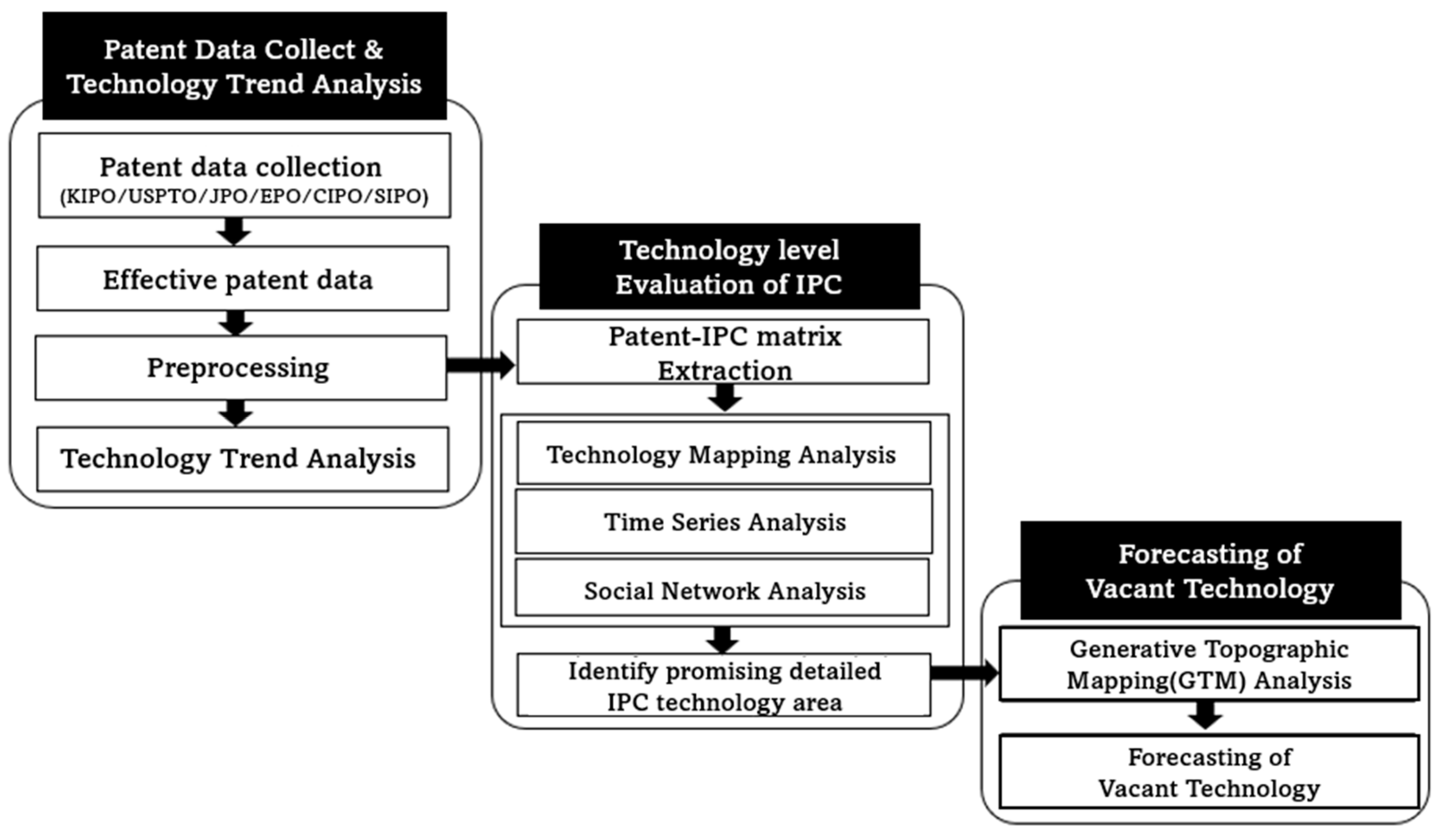
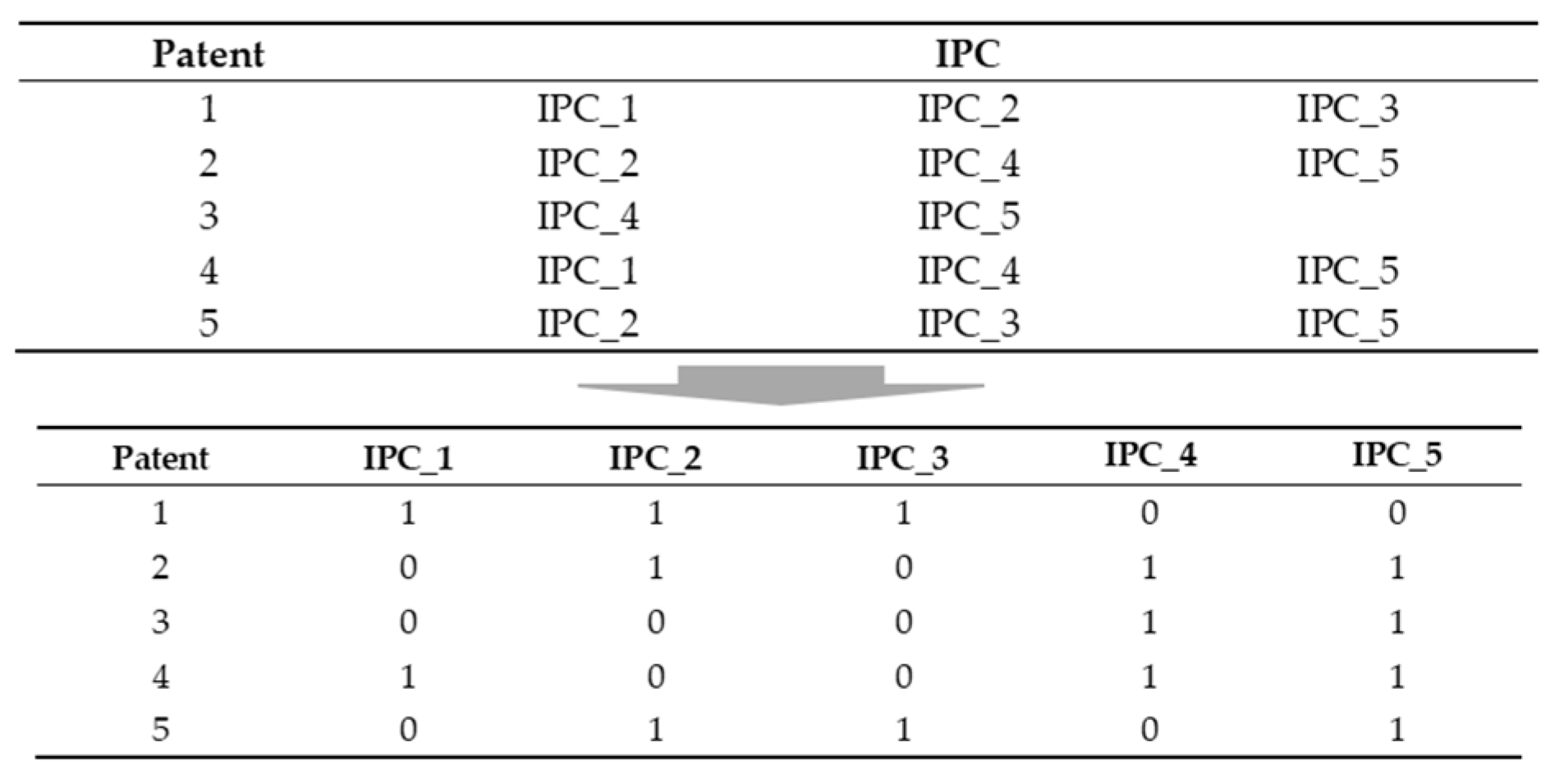
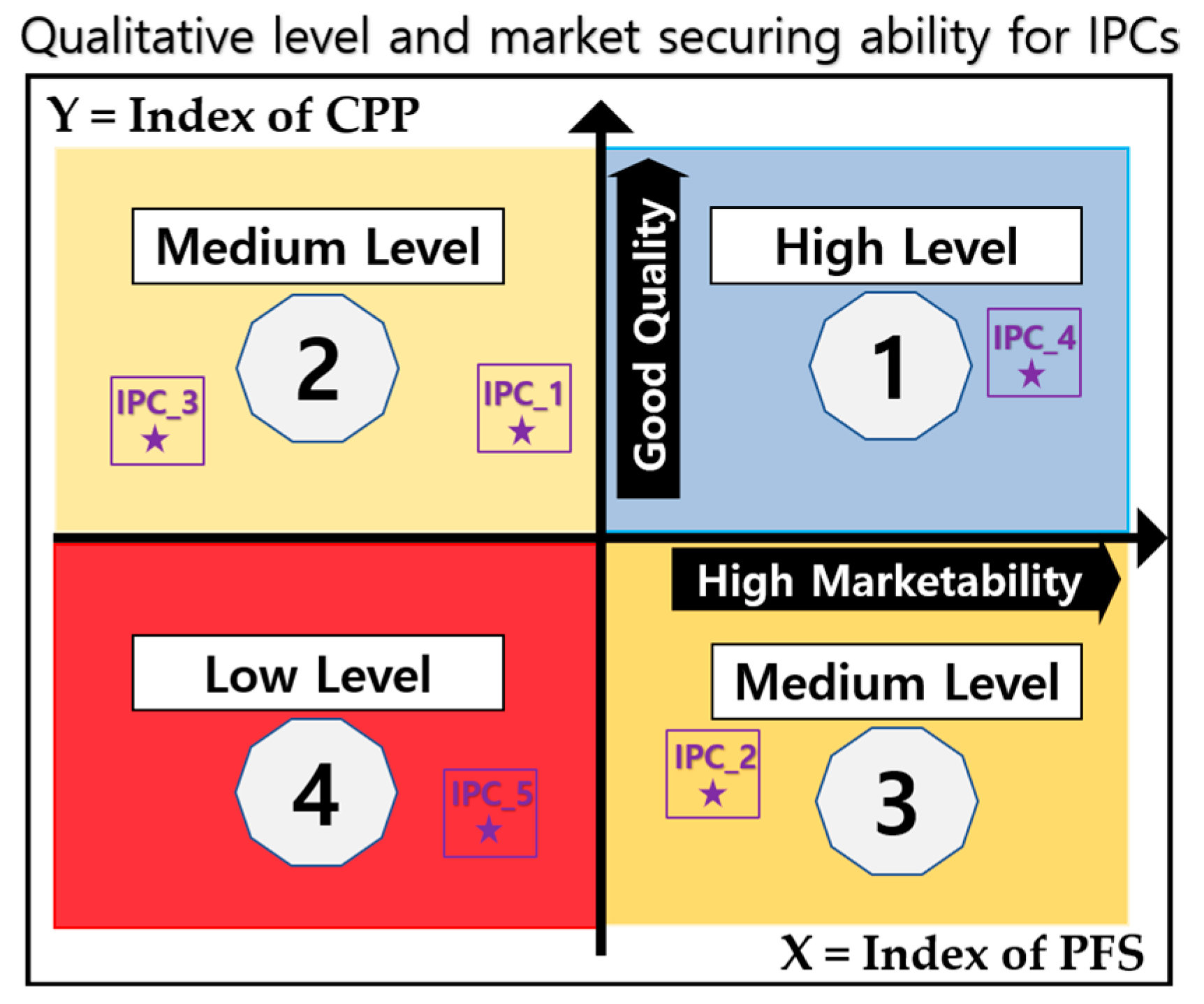
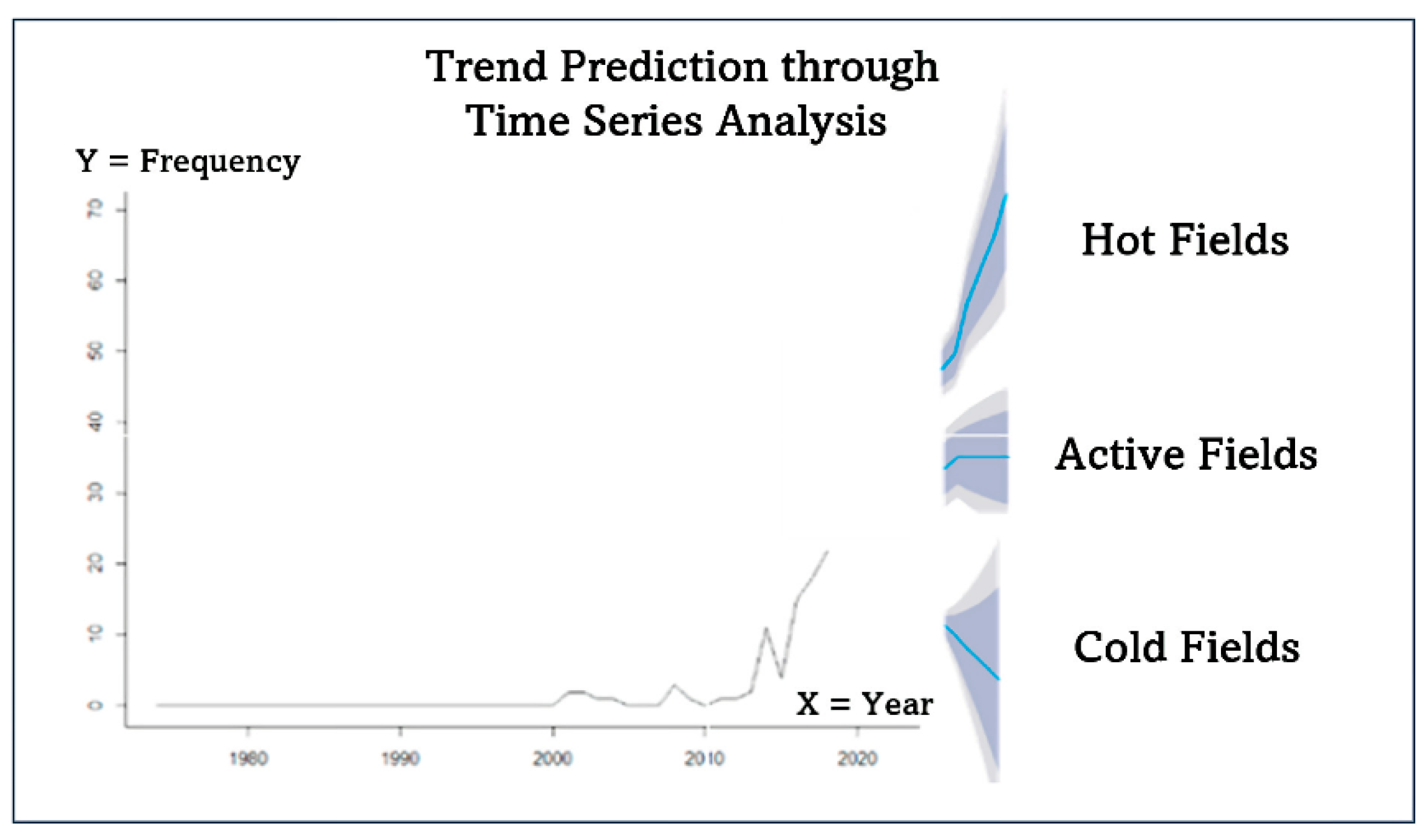
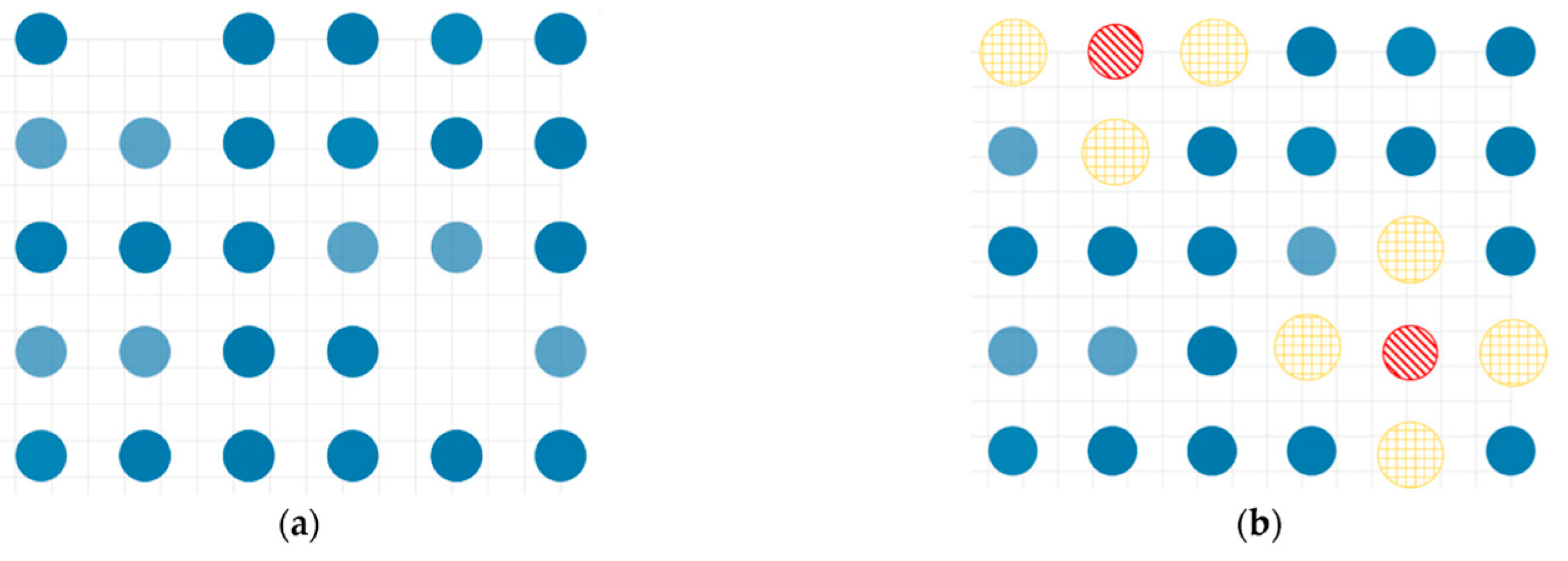


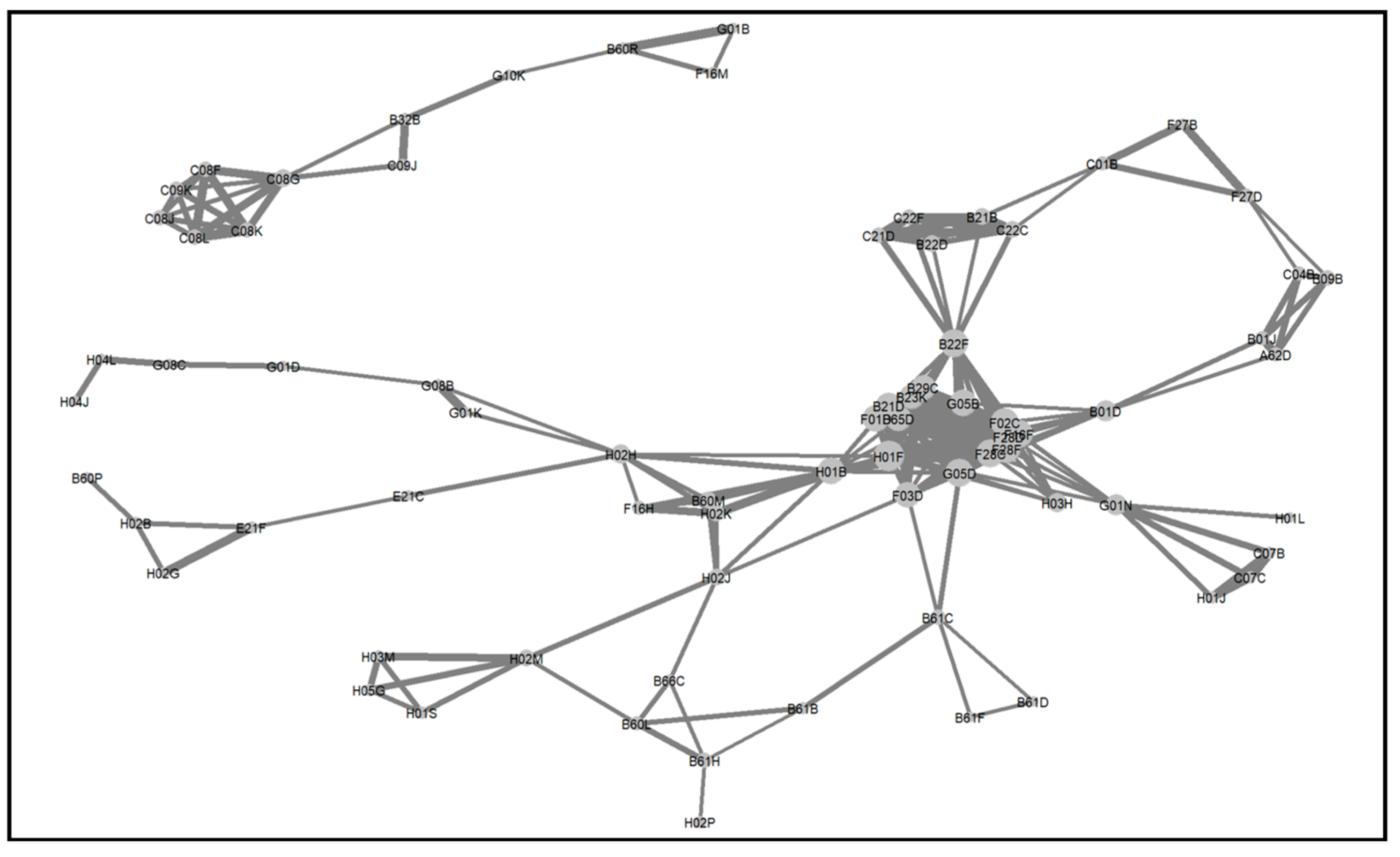
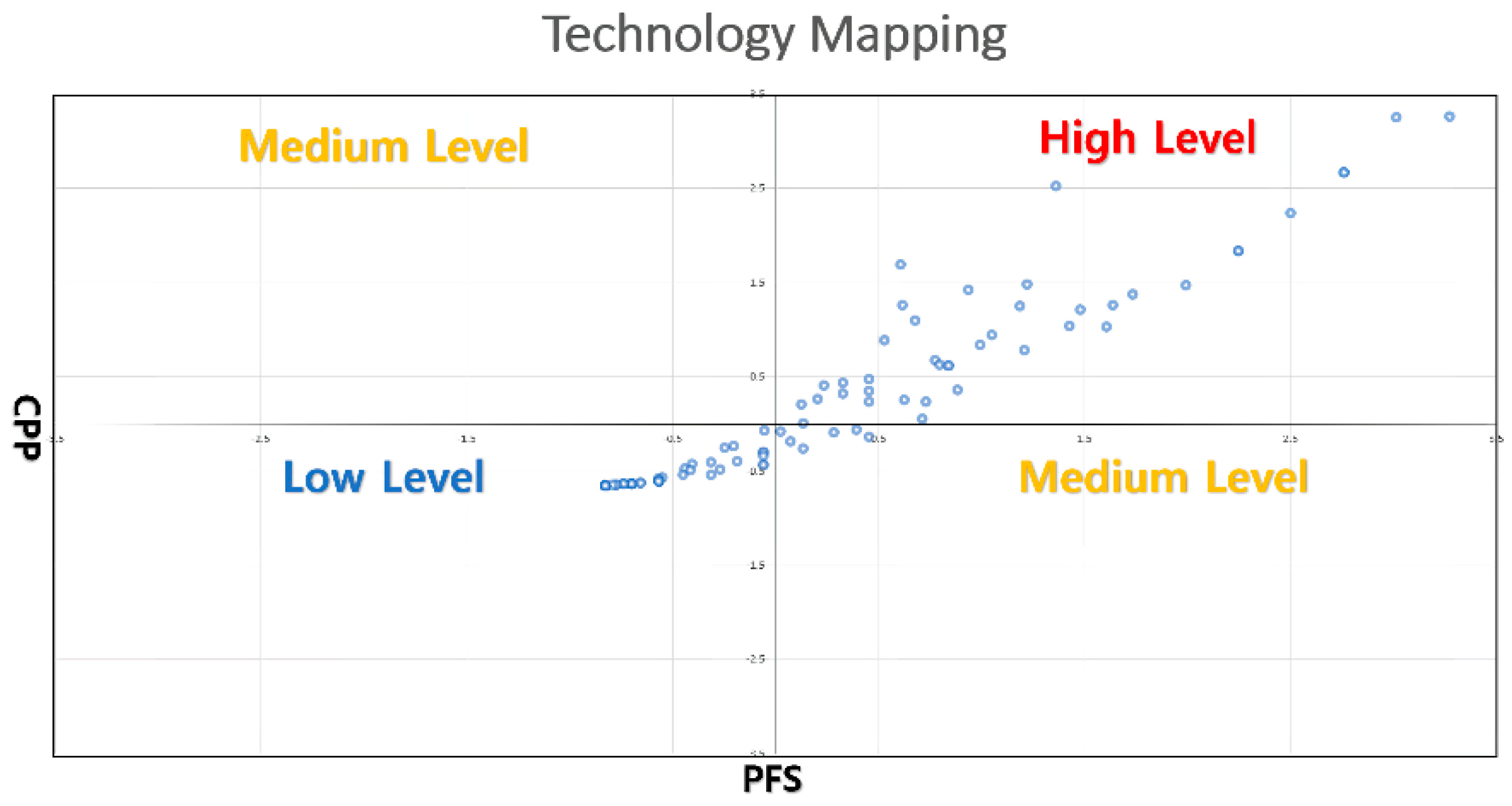
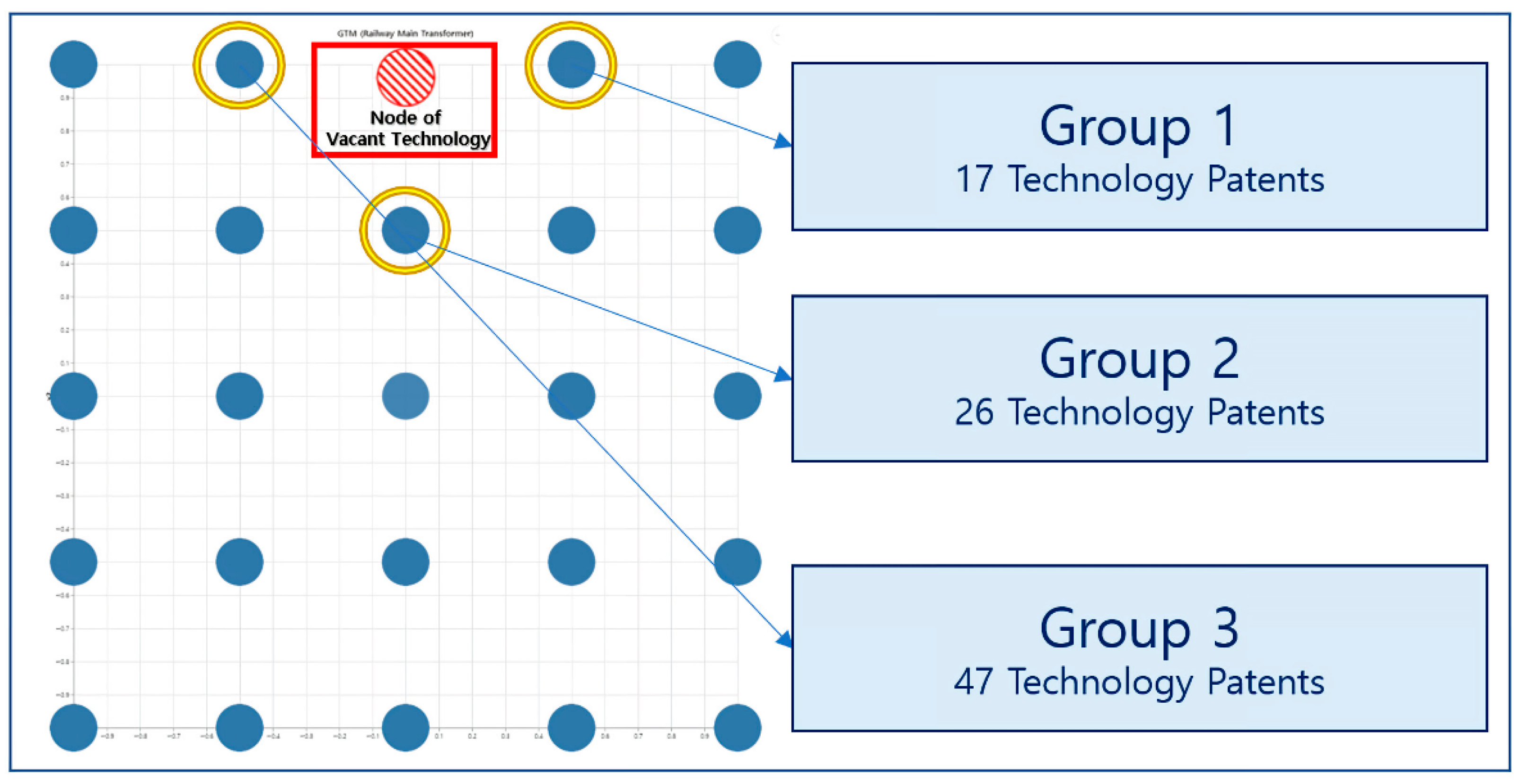
| Year of Publication | Author | Technology | Methodology |
|---|---|---|---|
| 2022 | Liu and Chen [21] 2 | Semiconductor industry | (A), (C) |
| 2022 | Mao et al. [22] 1 | Industrial wastewater treatment | (B) |
| 2022 | Park and Jun [23] 1 | Cognitive diagnosis model | |
| 2022 | Yang et al. [24] 1 | Hydrogen fuel cell | (A), (B), (C), (D) |
| 2022 | Choi and Woo [34] 2 | Hydrogen | (A), (B) |
| 2022 | Kwon et al. [40] 1 | Logistics | (A), (B), (C), (D) |
| 2022 | Du et al. [53] 1 | Train signal control | |
| 2022 | Anatolyevna [46] 2 | Labor market | (B), (C) |
| 2022 | Hingley and Dikta [48] 1 | Patent filings counts forecasts | (B), (C) |
| 2022 | Durmusoglu and Durmusoglu [43] 2 | Respiratory | (A), (B) |
| 2021 | Durmusoglu and Durmusoglu [44] 2 | Traffic control system for road vehicles | (A) |
| 2021 | Feng et al. [28] 1 | Mining machinery | (A), (B), (D) |
| 2021 | Yuan and Li [29] 1 | Battery electric vehicles | (A), (B), (C) |
| 2021 | Ferreira et al. [30] 2 | Cerrado plant species | (A), (B), (C) |
| 2021 | Sun et al. [41] 1 | High-speed railways | (A) |
| 2021 | Hanley et al. [42] 1 | High-speed railways | (A) |
| 2021 | Cho et al. [52] 2 | Electric motors of railway vehicles | (D) |
| 2020 | Karasev et al. [54] 1 | Foreign railway companies | |
| 2019 | Kim et al. [39] 1 | Wireless power transfer | (A), (B) |
| 2019 | Liu and Yang [51] 1 | High-speed rail industry | (C) |
| 2018 | Yoon and Magee [27] 1 | 3D printing | (B), (D) |
| 2018 | Cho et al. [38] 1 | High-rise building construction | (A), (C) |
| 2018 | Feng and Yu [55] 1 | China high-speed railway | |
| 2018 | Gou [56] 1 | Maglev transportation | |
| 2018 | Zhang and Zhang [57] 1 | Railway industry | |
| 2017 | Durmuşoğlu [50] 2 | Chemical industry | (B), (C) |
| 2017 | Suominen et al. [32] 2 | Telecommunication industry | (B) |
| 2016 | Madani and Weber [26] 1 | Pattern recognition | (B) |
| 2016 | Nikolopoulos et al. [47] 2 | Generic pharmaceuticals | (B), (C) |
| 2015 | Lee, et al. [31] 2 | Light-emitting diode (LED) | (A), (B), (C) |
| 2014 | Choi and Hwang [25] 1 | LED and wireless broadband | (B) |
| 2014 | Zhang and Zhang [58] 2 | Vibration-reduction control | |
| 2012 | Hidalgo and Gabaly [49] 1 | Spanish patents applications | (B), (C) |
| 2011 | Xiao [59] 1 | Train control system | |
| 2009 | Baser and Buchbauer [45] 1 | Art of eugenol | (B), (C) |
| 2009 | Salmi and Torkkeli [60] 1 | Satellite navigation systems |
| Papers | TSA (A) | SNA (B) | TM (C) | GTM (D) |
|---|---|---|---|---|
| Our paper | ✓ | ✓ | ✓ | ✓ |
| Sun et al. [41] | ✓ | |||
| Hanley et al. [42] | ✓ | |||
| Liu and Yang [51] | ✓ | |||
| Cho et al. [52] | ✓ | |||
| Du et al. [53] | ||||
| Karasev et al. [54] | ||||
| Feng and Yu [55] | ||||
| Gou [56] | ||||
| Zhang and Zhang [57] | ||||
| Zhang and Zhang [58] | ||||
| Xiao [59] | ||||
| Salmi and Torkkeli [60] |
| Patent | IPC_1 | IPC_2 | IPC_3 | IPC_4 | IPC_5 |
|---|---|---|---|---|---|
| 1 | 1 | 1 | 1 | 0 | 0 |
| 2 | 0 | 1 | 0 | 1 | 1 |
| 3 | 0 | 0 | 0 | 1 | 1 |
| 4 | 1 | 0 | 0 | 1 | 1 |
| 5 | 0 | 1 | 1 | 0 | 1 |
| IPC | IPC_1 | IPC_2 | IPC_3 | IPC_4 | IPC_5 |
|---|---|---|---|---|---|
| IPC_1 | 1 | −0.53452248 | −0.1336306 | −0.25 | −0.51449576 |
| IPC_2 | −0.5345225 | 1 | 0.7857143 | −0.3118048 | 0.04583492 |
| IPC_3 | −0.1336306 | 0.78571429 | 1 | −0.8017837 | −0.50418417 |
| IPC_4 | −0.25 | −0.31180478 | −0.8017837 | 1 | 0.91465912 |
| IPC_5 | −0.5144958 | 0.04583492 | −0.5041842 | 0.9146591 | 1 |
| Rank | Applicant | Region/City | Number of Patents Filed (Patent Share) |
|---|---|---|---|
| 1 | CRRC Co., Ltd. | China/Beijing | 59 (8.4%) |
| 2 | Mitsubishi Electric Corp. | Japan/Tokyo | 46 (6.5%) |
| 3 | ABB Group. | Europe/Zurich | 25 (3.5%) |
| 4 | Toshiba Corp. | Japan/Tokyo | 20 (2.8%) |
| 5 | Wolong Electric Group Co., Ltd. | China/Shaoxing | 18 (2.6%) |
| 6 | Hitachi, Ltd. | Japan/Tokyo | 16 (2.3%) |
| 7 | Southwest Jiaotong University | China/Chengdu | 15 (2.1%) |
| 8 | China Railway Engineering Equipment Group Co., Ltd. | China/Zhengzhou | 13 (1.8%) |
| 9 | Siemens AG. | Europe/Munich | 13 (1.8%) |
| 10 | Alstom S.A. | Europe/Saint-Ouen | 11 (1.6%) |
| Rank | Applicant | Region/City | Number of Patents Filed (Patent Share) |
|---|---|---|---|
| 1 | CRRC Co., Ltd. | China/Beijing | 35 (15%) |
| 2 | Southwest Jiaotong University | China/Chengdu | 15 (6.4%) |
| 3 | Hitachi, Ltd. | Japan/Tokyo | 14 (6%) |
| 4 | China Railway Engineering Equipment Group Co., Ltd. | China/Zhengzhou | 9 (3.8%) |
| 5 | Bombardier Inc. | Canada/Montreal | 7(3%) |
| 6 | Mitsubishi Electric Corp. | Japan/Tokyo | 6 (2.5%) |
| 7 | Zhuzhou Lince Group Co., Ltd | China/Zhengzhou | 5 (2.14%) |
| 8 | Wolong Electric Group Co., Ltd. | China/Shaoxing | 4 (1.7%) |
| 9 | Alstom S.A. | Europe/Saint-Ouen | 4 (1.7%) |
| 10 | Toshiba Corp. | Japan/Tokyo | 3 (1.28%) |
| IPC | Betweenness (X) | Closeness (X) | Degree (X) | Priority |
|---|---|---|---|---|
| “B01D”, “B09B”, “B22D”, “B22F”, “B23K”, “B32B”, “B60L”, “B60M”, “B60R”, “B61C”, “B61D”, “B61L”, “B62D”, “C04B”, “C08G”, “C08J”, “C08K”, “C08L”, “C21D”, “C22C”, “C22F”, “F01D”, “F03D”, “F04D”, “F16F”, “F16M”, “F28D”, “G01D”, “G01N”, “G01R”, “G05D”, “G05F”, “G08B”, “H01B”, “H01F”, “H01H”, “H01L”, “H02B”, “H02H”, “H02J”, “H02K”, “H02M”, “H02P”, “H03H”, “H04L”, “H05B”, “H05K” | 100 < X | 40 < X | 5 < X | High |
| “A61F”, “A61L”, “A61N”, “A62D”, “B01J”, “B21D”, “B29C”, “B60K”, “B61B”, “B61F”, “B61H”, “B66C”, “C01B”, “C07B”, “C07C”, “C08F”, “C09D”, “C09J”, “E04G”, “E04H”, “E21C”, “E21F”, “F02C”, “F27B”, “F27D”, “F28C”, “F28F”, “G01B”, “G01K”, “G01M”, “G05B”, “G06G”, “G09B”, “G10K”, “H01J”, “H03K”, “H04B”, “H04J” | 10 < X < 100 | 30 < X < 40 | 2 < X < 5 | Medium |
| “B08B”, “B21B”, “B23D”, “B24B”, “B60C”, “B60H”, “B60P”, “B61K”, “B65D”, “B65G”, “B65H”, “B66D”, “C01G”, “C09K”, “C23C”, “C25C”, “C30B”, “E01H”, “F01K”, “F02B”, “F02P”, “F16D”, “F16H”, “F16K”, “F16L”, “F24S”, “G01F”, “G01P”, “G01V”, “G06F”, “G06K”, “G06Q”, “G08C”, “H01Q”, “H01R”, “H01S”, “H01T”, “H02G”, “H02S”, “H03M”, “H04N”, “H05G” | X < 10 | X < 30 | X < 2 | Low |
| IPC | Technology Level |
|---|---|
| “A62D”, “B01D”, “B01J”, “B09B”, “B22D”, “B22F”, “B23K”, “B60L”, “B60M”, “B60R”, “B61H”, “B65D”, “C04B”, “C08F”, “C08G”, “C08J”, “C08K”, “C08L”, “C09K”, “C21D”, “C22C”, “C22F”, “E21F”, “F01K”, “F02C”, “F04D”, “F16K”, “F27B”, “F27D”, “G01B”, “G01N”, “G05F”, “H01B”, “H01H”, “H01L”, “H02G”, “H02H”, “H02J”, “H02K”, “H02M”, “H05B”, “H05K”, “H01F”, “F01D”, “F03D”, “H03H”, “B65H”, “F16H”, “F02P”, “H02B”, “B61C”, “H03K” | High |
| “F16M”, “H02P”, “H03M”, “H04B”, “H04N”, “H05G” | Medium |
| “A61F”, “A61L”, “A61N”, “B08B”, “B21B”, “B21D”, “B23D”, “B24B”, “B29C”, “B32B”, “B60C”, “B60H”, “B60K”, “B60P”, “B61B”, “B61C”, “B61D”, “B61F”, “B61K”, “B61L”, “B62D”, “B65G”, “B65H”, “B66C”, “B66D”, “C01B”, “C01G”, “C07B”, “C07C”, “C09D”, “C09J”, “C23C”, “C25C”, “C30B”, “E01H”, “E04G”, “E04H”, “E21C”, “F01D”, “F02B”, “F02P”, “F03D”, “F16D”, “F16F”, “F16H”, “F16L”, “F24S”, “F28C”, “F28D”, “F28F”, “G01D”, “G01F”, “G01K”, “G01M”, “G01P”, “G01R”, “G01V”, “G05B”, “G05D”, “G06F”, “G06G”, “G06K”, “G06Q”, “G08B”, “G08C”, “G09B”, “G10K”, “H01J”, “H01Q”, “H01R”, “H01S”, “H01T”, “H02B”, “H02S”, “H03H”, “H03K”, “H04J”, “H04L” | Low |
| IPC | Fields |
|---|---|
| “B24B”, “B60L”, “B60M”, “B61C”, “C09D”, “E04G”, “E04D”, “F04D”, “F04H”, “F16H”, “F28C”, “F28F”, “G01D”, “G01R”, “G05F”, “G06F”, “G08B”, “G08C”, “H01B”, “H01F”, “H01R”, “H02H”, “H02J”, “H02K”, “H02M”, “H04L”, “H05K” | Hot |
| “B01D”, “B61L”, “B66D”, “C08L”, “E01H”, “F03D”, “F16F”, “F28D”, “G01K”, “G01N”, “G05D”, “G06G”, “G09B”, “H02B”, “H02P”, “H05B” | Active |
| “A61F”, “A61L”, “A61N”, “A62D”, “B01J”, “B08B”, “B09B”, “B21B”, “B21D”, “B22D”, “B22F”, “B23D”, “B23K”, “B29C”, “B32B”, “B60C”, “B60H”, “B60K”, “B60P”, “B60R”, “B61B”, “B61D”, “B61F”, “B61H”, “B61K”, “B62D”, “B65D”, “B65G”, “B65H”, “B66C”, “C01B”, “C01G”, “C04B”, “C07B”, “C07C”, “C08F”, “C08G”, “C08J”, “C08K”, “C09J”, “C09K”, “C21D”, “C22C”, “C22F”, “C23C”, “C25C”, “C30B”, “E21C”, “E21F”, “F01D”, “F01K”, “F02B”, “F02C”, “F02P”, “F16D”, “F16K”, “F16L”, “F16M”, “F24S”, “F27B”, “F27D”, “G01B”, “G01F”, “G01M”, “G01P”, “G01V”, “G05B”, “G06K”, “G06Q”, “G10K”, “H01H”, “H01J”, “H01L”, “H01Q”, “H01S”, “H01T”, “H02G”, “H02S”, “H03H”, “H03K”, “H03M”, “H04B”, “H04J”, “H04N”, “H05G” | Cold |
| IPC | Qualitative Evaluation | Quantitative Evaluation | Priority | |
|---|---|---|---|---|
| Technology Mapping Analysis | Social Network Analysis | Time Series Analysis | ||
| “B60L”, “B60M”, “F04D”, “G05F”, “H01B”, “H01F”, “H02H”, “H02J”, “H02K”, “H02M”, “H05K” | High | High | Hot | 1 |
| “B01D”, “C08L”, “G01N”, “H05B” | High | High | Active | 2 |
| “B61C”, “G01D”, “G01R”, “G08B”, “H04L” | Low | High | Hot | 3 |
| “B09B”, “B22D”, “B22F”, “B23K”, “B60R”, “C04B”, “C08G”, “C08J”, “C08K”, “C21D”, “C22C”, “C22F”, “H01H”, “H01L” | High | High | Cold | 3 |
| “H02P” | Medium | High | Active | 3 |
| “C09D”, “E04G”, “E04H”, “F28C”, “F28F” | Low | Medium | Hot | 4 |
| “A62D”, “B01J”, “B61H”, “C08F”, “E21F”, “F02C”, “F27B”, “F27D”, “G01B” | High | Medium | Cold | 4 |
| “F16M” | Medium | High | Cold | 4 |
| “B61L”, “F03D”, “F16F”, “F28D”, “G05D”, “H02B” | Low | High | Active | 4 |
| “B24B”, “F16H”, “G06F”, “G08C”, “H01R” | Low | Low | Hot | 5 |
| “B65D”, “C09K”, “F01K”, “F16K”, “H02G” | High | Low | Cold | 5 |
| “B32B”, “B61D”, “B62D”, “F01D”, “H03H” | Low | High | Cold | 5 |
| “H04B” | Medium | Medium | Cold | 5 |
| “G01K”, “G06G”, “G09B” | Low | Medium | Active | 5 |
| “A61F”, “A61L”, “A61N”, “B21D”, “B29C”, “B60K”, “B61B”, “B61F”, “B66C”, “C01B”, “C07B”, “C07C”, “C09J”, “E21C”, “G01M”, “G05B”, “G10K”, “H01J”, “H03K”, “H04J” | Low | Medium | Cold | 6 |
| “H03M”, “H04N”, “H05G” | Medium | Low | Cold | 6 |
| “B66D”, “E01H” | Low | Low | Active | 6 |
| “B08B”, “B21B”, “B23D”, “B60C”, “B60H”, “B60P”, “B61K”, “B65G”, “B65H”, “C01G”, “C23C”, “C25C”, “C30B”, “F02B”, “F02P”, “F16D”, “F16L”, “F24S”, “G01F”, “G01P”, “G01V”, “G06K”, “G06Q”, “H01Q”, “H01S”, “H01T”, “H02S” | Low | Low | Cold | 7 |
| IPC | Title |
|---|---|
| B60L | (1) Propulsion of electric vehicles. (2) Power the auxiliary equipment for electric propulsion. (3) Generally, electrodynamic braking systems for vehicles. (4) Vehicle magnetic suspension or injury. (5) Monitoring of operating variables of electric propulsion vehicles. (6) Electrical safety equipment for electric propulsion vehicles. |
| B60M | (1) Electric propulsion vehicle power supply lines. (2) A device along rails. |
| F04D | (1) Non-positive-displacement pumps (engine fuel-injection pumps; electrodynamic pumps; cooling; diminishing heat transfer; heating; ion pumps). |
| G05F | (1) A system for adjusting electrical or magnetic variables. |
| H01B | (1) Material selection for cable, conductor, insulator, conductive insulation, or dielectric properties. |
| H01F | (1) Magnet inductance; transformer; selection of materials for magnetic properties. |
| H02H | (1) Emergency protective circuit device. |
| H02J | (1) A circuit device or system for power supply or distribution. (2) Electrical energy storage system. |
| H02K | (1) Dynamo electromechanical. |
| H02M | (1) Equipment for conversion between AC and AC, between AC and DC, or between DC and DC, and for use in mains or similar power supply systems. (2) Convert DC or AC input power into surge output power. (3) Control or regulation. |
| H05K | (1) Printed circuit. (2) Casings or structural details of electrical equipment. (3) Manufacture of electrical assembly. |
| Group | Forecasted Vacant Technology | Technology Keywords for Each Identified Group |
|---|---|---|
| 1 | Blowerless Technology in Main Transformer | fanless, blowerless, inverter, cooling, nature |
| 2 | Oil-Free Technology in Main Transformer | refrigerant, insulating, dry, leak, oilfree |
| 3 | Solid-State Technology in Main Transformer | solid-state, highfrequency, semiconductor, converter, modular, electronic, multilevel |
| Forecasted Vacant Technology | International Union of Railways (UIC) Rail Technical Strategy Europe | Railway Technical Research Institute (RTRI) Master Plan Research 2020 | Korea Railroad Research Institute (KRRI) National Transportation Research and Planning Project |
|---|---|---|---|
| Blowerless Technology in Main Transformer | √ | √ | √ |
| Oil-Free Technology in Main Transformer | √ | √ | √ |
| Solid-State Technology in Main Transformer | √ | √ | √ |
Disclaimer/Publisher’s Note: The statements, opinions and data contained in all publications are solely those of the individual author(s) and contributor(s) and not of MDPI and/or the editor(s). MDPI and/or the editor(s) disclaim responsibility for any injury to people or property resulting from any ideas, methods, instructions or products referred to in the content. |
© 2022 by the authors. Licensee MDPI, Basel, Switzerland. This article is an open access article distributed under the terms and conditions of the Creative Commons Attribution (CC BY) license (https://creativecommons.org/licenses/by/4.0/).
Share and Cite
Lee, Y.-J.; Han, Y.J.; Kim, S.-S.; Lee, C. Patent Data Analytics for Technology Forecasting of the Railway Main Transformer. Sustainability 2023, 15, 278. https://doi.org/10.3390/su15010278
Lee Y-J, Han YJ, Kim S-S, Lee C. Patent Data Analytics for Technology Forecasting of the Railway Main Transformer. Sustainability. 2023; 15(1):278. https://doi.org/10.3390/su15010278
Chicago/Turabian StyleLee, Yong-Jae, Young Jae Han, Sang-Soo Kim, and Chulung Lee. 2023. "Patent Data Analytics for Technology Forecasting of the Railway Main Transformer" Sustainability 15, no. 1: 278. https://doi.org/10.3390/su15010278
APA StyleLee, Y.-J., Han, Y. J., Kim, S.-S., & Lee, C. (2023). Patent Data Analytics for Technology Forecasting of the Railway Main Transformer. Sustainability, 15(1), 278. https://doi.org/10.3390/su15010278












